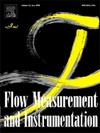Improved method for sample mixing, handling and analysis in high water cut samples
IF 2.3
3区 工程技术
Q2 ENGINEERING, MECHANICAL
引用次数: 0
Abstract
Operating production facilites in mature fields globally pose both measurement challenges and opportunities. When production depletes, facility operations may transition from three-phase to two-phase production separation resulting in allocation measurement of oil and water mixtures.
There are two common approaches used for production allocation measurement to determine water cut: online water cut analyzers (WCA) and sampling.Sampling can be spot or automatic, with automatic sampling preferred for custody applications when water content is less than 5 % by volume. Spot sampling is the common method used for field verifying WCA. The most common technique for determining water content in a sample is by centrifuge; however, the centrifuge methods lack published reproducibility and repeatability data at high water cuts (>5 % water in oil by volume). Sample handling and mixing with high water concentrations are also a severe challenge, especially with light oils and products which don't mix well. As WCAs are used more and more in high water cut production allocation, an accurate methodology for verifying the instruments is required for broad industry acceptance but the current industry guidance is very limited.
This paper describes an improved method for sample handling, and mixing and describes the proof of concept of using existing methods for analysis of high water cut samples for production allocation measurement developed in support of WCA verification. The testing described in this paper used water cuts 15–95 % by volume, and three hydrocarbons: two crudes and one distillate oil. The data demonstrates the range of the standard methods (API 10.3 and API 10.4) could be expanded while meeting or exceeding the current reproducibility requirements of API MPMS Ch 8 and Ch 10.
改进了高含水样品的混合、处理和分析方法
全球成熟油田的生产设施运营既带来了测量方面的挑战,也带来了机遇。当产量减少时,设施运行可能会从三相生产分离过渡到两相生产分离,从而导致油水混合物的分配测量。用于生产分配测量以确定减水的方法有两种:在线减水分析仪(WCA)和取样。现场取样是现场验证 WCA 的常用方法。确定样品中水含量的最常用技术是离心法;但是,离心法缺乏已公布的高水含量(按体积计算,油中含水量为 5%)时的重现性和重复性数据。高浓度水的样品处理和混合也是一个严峻的挑战,尤其是轻质油和混合不佳的产品。本文介绍了一种改进的样品处理和混合方法,并介绍了使用现有方法分析高减水率样品的概念验证,该方法用于支持 WCA 验证开发的生产分配测量。本文描述的测试使用了体积分数为 15-95% 的减水率和三种碳氢化合物:两种原油和一种馏分油。数据表明,标准方法(API 10.3 和 API 10.4)的范围可以扩大,同时达到或超过 API MPMS Ch 8 和 Ch 10 目前的重现性要求。
本文章由计算机程序翻译,如有差异,请以英文原文为准。
求助全文
约1分钟内获得全文
求助全文
来源期刊

Flow Measurement and Instrumentation
工程技术-工程:机械
CiteScore
4.30
自引率
13.60%
发文量
123
审稿时长
6 months
期刊介绍:
Flow Measurement and Instrumentation is dedicated to disseminating the latest research results on all aspects of flow measurement, in both closed conduits and open channels. The design of flow measurement systems involves a wide variety of multidisciplinary activities including modelling the flow sensor, the fluid flow and the sensor/fluid interactions through the use of computation techniques; the development of advanced transducer systems and their associated signal processing and the laboratory and field assessment of the overall system under ideal and disturbed conditions.
FMI is the essential forum for critical information exchange, and contributions are particularly encouraged in the following areas of interest:
Modelling: the application of mathematical and computational modelling to the interaction of fluid dynamics with flowmeters, including flowmeter behaviour, improved flowmeter design and installation problems. Application of CAD/CAE techniques to flowmeter modelling are eligible.
Design and development: the detailed design of the flowmeter head and/or signal processing aspects of novel flowmeters. Emphasis is given to papers identifying new sensor configurations, multisensor flow measurement systems, non-intrusive flow metering techniques and the application of microelectronic techniques in smart or intelligent systems.
Calibration techniques: including descriptions of new or existing calibration facilities and techniques, calibration data from different flowmeter types, and calibration intercomparison data from different laboratories.
Installation effect data: dealing with the effects of non-ideal flow conditions on flowmeters. Papers combining a theoretical understanding of flowmeter behaviour with experimental work are particularly welcome.
 求助内容:
求助内容: 应助结果提醒方式:
应助结果提醒方式:


